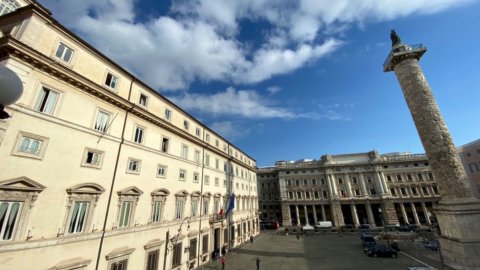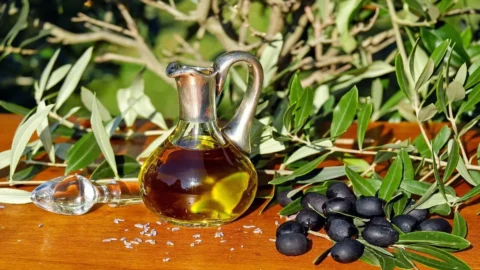As reported by Intesa Sanpaolo, in the last decade Turkey has increased its trade by about 11% on average per year, reaching almost 400 billion dollars in 2014. Since 2012 this expansionary trend has slowed down, settling at around 3,5% per year. 2014 saw a correction of imports of 3,7% to 242 billion, while exports grew by 3,9% to 158 billion, thus reaching an all-time high. La decline in energy prices, the contraction in gold imports, geopolitical tensions in some neighboring countries have penalized inflows, while the European economic recovery and the weak performance of the local currency have boosted exports. Still provisional data relating to the first three months of 2015, from local sources, show a decrease in both imports (-9%) and exports (-7,5%). The annual net balance of trade is historically negative and 2014 was no exception, with the deficit amounting to around 85 billion.
The share of trade covered by Turkey on the world market is approximately 1,1% in 2013. The product detail of imports sees the prevalence in 2014 of minerals (23,3%) and machinery (21,2%), as well as metals (12,5%), chemical products (8,5%), means of transport (8,2%) and rubber and plastic (7,0%). Exports are represented by textile and clothing products (19,7%), machinery (15,2%), metals (13,2%), means of transport (12,7%) and agro-food products (11,4, XNUMX%). A more detailed analysis of the various imported categories makes it possible to detect how energy minerals prevail, and in particular crude oil, refined oil, gas and coal. Among the machinery, there are both mechanical ones (processors, diesel engines), and electrical ones (telephone devices and part of televisions), while among the optical, precision and medical ones, electromedical devices stand out. As regards the details of the major export categories, Turkey is one of the world's major leaders in the textile and clothing sector: it represents about 20% of the total exported in 2014. It mainly refers to clothing and accessories in knitwear and fabric, both for men and women. In the machinery sector, among the mechanics, refrigerators, freezers, engine parts stand out, while among the electrical and electronic sectors, insulated cables, televisions and monitors stand out. The relevance of optical, medical and precision equipment is less. In the metallurgy sector, exports of iron and steel are important, in the form of rods, bars and rolled products, as well as iron and steel products, such as iron structures, pipes. Among the means of transport, the most important components are made up of motor vehicles and trucks. The major agro-food products exported are those of fruit, food preparations based on fruit, vegetables or cereals, as well as animal and vegetable fats and oils. The presence on Turkish territory of numerous production lines of major global car manufacturers fuels trade in means of transport, destined not only for the domestic market, but also exported to other European, Asian and American countries.
Europe is the main supplier of Turkey with a share of almost 52% in 2014, especially Russia with more than 10% of the import, followed among Europeans by Germany with over 9% and Italy with 5%. Asia supplied about 32% of Turkish imports and China stands out among the largest markets with a share of more than 10%, followed by Iran with over 4%. Turkish exports are mostly destined for Europe (53,1%), especially for Germany (in 2014 it bought about 10% of the total), followed by Italy (4,5%) and France (4,1%) thanks above all to the presence in Turkey of important production lines of car manufacturers. Exports destined for Asia amounted to over 30% and among the major customers are Iraq (6,9%), UAE (3%) and Iran (3%).
Le Italian exports to Turkey they have been growing over time, reaching a maximum in 2012 with 10,6 billion euros. They then dropped in the following two years to 9,8 billion in 2014 (-3,3%), according to still provisional data. The numbers relating to imports have historically been lower than exports and in 2014 this amount was 5,7 billion (+3,6%), in a scenario where Italian trade was equal to 15,5 billion (-0,8%). The share of trade with Turkey on the overall Italian total is constantly growing, reaching 2,1% in the last three years (equal to 1,7% in 2007). The net balance was positive for Italy for 4,1 billion in 2014. The breakdown by category shows a surplus for Italy for almost all product categories except for agricultural and food products, mining, textile-clothing and means of transportation.
Italy mainly imports means of transport, textile and clothing products, metals and metal products, rubber and plastic and chemical products. Exports consist of mechanical machinery, electrical machinery, refined petroleum products, transportation equipment, and chemicals. Imports of means of transport (+12,5%), textiles and clothing (+3,3%) and agricultural products (+13,3%) increased last year. Among exports, however, the sharpest contractions were recorded by refined petroleum products (-19,8%) and means of transport (-8,5%). The data for the first two months of 2015 show an increase of about 12% in imports, while the growth in exports is limited to just over 6%. The particularly positive dynamics of imports is attributable to recovery of mining and refining and the further growth of machinery and transportation equipment. The latter categories also drove exports. The Turkish share of the total Italian sector is significant in numerous product categories, both in terms of import and export. On the import side, the percentage of mechanical machinery should be noted, up from 4,9% in 2010 to 6,8% in 2014. The share relating to paper and cellulose also grew from 5,2% to 5,6%, as that of furniture, lights and signs (from 4,4% to 5%) and vehicles (from 3,3% to 3,7%). The share of electrical and electronic machinery, as well as rubber and plastics, decreased (both categories dropped from 4,5% to 3,5%). Among exports, it is important to note the growth in the share of knitted fabrics, which rose to 38,5% in 2014 from 28,4% in 2010, and of cotton (to 18,2% from 11,9%). The share of fruit also rose (to 18,9% from 12,5%). Limited increases also in rubber and plastic, as in iron and steel items.
In this scenario, according toDoing Business index calculated by the World Bank, Turkey in 2015 ranked 55th (out of the 189 countries considered), down four positions compared to the previous year. Among the components to which a better score is assigned, it should be noted that relating to investor protection (13th), to contractual protection (38th). Instead, it is placed in a disadvantaged position with regard to obtaining building permits and licenses (136th), and for the resolution of insolvencies (109th).





